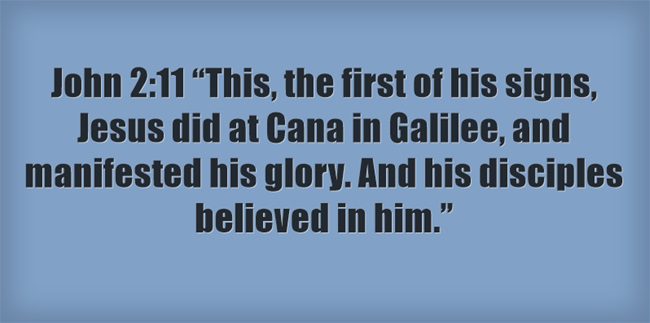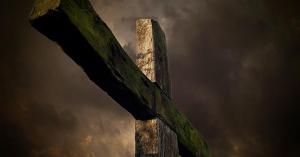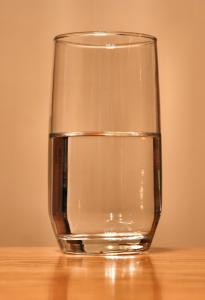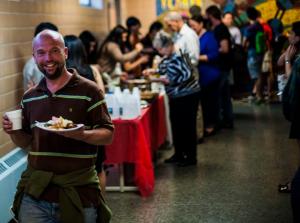What do the gospels record as Jesus’ very first miracle? What was the significance of it?
Jesus’ First Miracle
John 2:1-5 “On the third day there was a wedding at Cana in Galilee, and the mother of Jesus was there. Jesus also was invited to the wedding with his disciples. When the wine ran out, the mother of Jesus said to him, “They have no wine.” And Jesus said to her, “Woman, what does this have to do with me? My hour has not yet come.” His mother said to the servants, “Do whatever he tells you.”
I think the significance of Jesus’ very first miracle was that it took place at a wedding. Since Jesus and His mother Mary were invited, this must have been a relative or a close family friend that knew them. There is another wedding coming…it is the consummation of the kingdom when Jesus, presently betrothed or engaged to the church, will marry His bride and will be followed by a great wedding feast in the kingdom of heaven. We notice that the wine ran out and when the wine ran out at a Jewish wedding feast, this was bad news. It reflected poorly on the family and there would have been some disgrace associated with this so Mary comes to Jesus and tells Him “They have no wine.” Jesus tells Mary something very interesting. He says “Woman, what does this have to do with me? My hour has not yet come.” Is this a reference to His coming passion and suffering at the cross where they gave Him wine mixed with gall (Matt 27:34)? He says “My hour has not yet come?” so this may mean that His time to begin His ministry with the associated miracles that would accompany it was not going to be dictated by humans (including Mary) but by Jesus Himself. We could also come to the conclusion that by His saying “My hour has not yet come” He is also referring to His eventual passion and suffering at Calvary which makes sense of Matthew 27:34 in the future which of course He knew would come to pass.
I love what Mary’s response was and it should be every believer’s response: “Do whatever he tells you.” That is what we are also commanded to do (Matt 28:18-20). In the Great Commission we are to “Do whatever he tells” us and that is to go into all the world and to make disciples of others and to “observe all that I have commanded you.” That is submission to Jesus Christ as our Lord and our God.
John 2:6-8 “Now there were six stone water jars there for the Jewish rites of purification, each holding twenty or thirty gallons. Jesus said to the servants, “Fill the jars with water.” And they filled them up to the brim. And he said to them, “Now draw some out and take it to the master of the feast.” So they took it.”
The number six may be significant because six is the number of man as he was created on the sixth day and the jars were there for the ritualistic washings (a vain, human attempt at purification). The stone water jars were intended for the purpose of the Jewish rites of purification and there may have been a total of 120 to 160 gallons of water in all and so that is a lot of wine. Wine, in the Old Testament, is associated with joy and joy at a wedding feast was typical. The symbolism may be that we are cleansed by the blood of the Lamb of God and purified in Him (2 Cor 5:21; 1 Cor 6:11; Heb 9:22; 1 Pet 1:2) by the washing of the water of the word (Eph 5:26). When these jars were filled to the brim, Jesus told them to “draw some out and take it to the master of the feast” and our Master will be Jesus as the wedding feast of the Bride of Christ, the church and Jesus as our Bridegroom and surely “Blessed are those who are invited to the marriage supper of the Lamb” (Rev 19:9). This background of the wedding most certainly portrays the coming wedding feast which will be above any human knowledge of joy ever known and also reflect the “salvation banquet” shortly after the Bride of Christ, the church, is joined for eternity with the Bridegroom, Jesus Christ.
John 2:9-10 “When the master of the feast tasted the water now become wine, and did not know where it came from (though the servants who had drawn the water knew), the master of the feast called the bridegroom and said to him, “Everyone serves the good wine first, and when people have drunk freely, then the poor wine. But you have kept the good wine until now.”
This new wine could represent the New Covenant teachings that Christ brought as the Messiah, fulfilling the prophecies by the Old Testament prophets. Luke 5:33-38 strongly resembles the wedding and the new wine and this was in the context of the Pharisees rebuking Jesus’ disciples for not following their human traditions when they said to Jesus:
“The disciples of John fast often and offer prayers, and so do the disciples of the Pharisees, but yours eat and drink.” And Jesus said to them, “Can you make wedding guests fast while the bridegroom is with them? The days will come when the bridegroom is taken away from them, and then they will fast in those days.” He also told them a parable: “No one tears a piece from a new garment and puts it on an old garment. If he does, he will tear the new, and the piece from the new will not match the old. And no one puts new wine into old wineskins. If he does, the new wine will burst the skins and it will be spilled, and the skins will be destroyed. But new wine must be put into fresh wineskins. And no one after drinking old wine desires new, for he says, ‘The old is good.”
Jesus had the new wine and the new wine skins which would be filled with Jesus’ new wine could be thought of as those who believed in Christ and the old wine skins as the Jews who had their old wine of traditions and beliefs. Jesus’ teachings (the new wine) would burst through these old wine skins (religious leaders of Judea). Interestingly, this occurrence also referred to the “wedding guests [and] the bridegroom” (Christ).
John 2:11 “This, the first of his signs, Jesus did at Cana in Galilee, and manifested his glory. And his disciples believed in him.”
This sign was the first of many and indicated the divinity of Jesus, not just that He was “a” human Messiah but the Messiah Who was God and Man, the Promised Seed given to Adam and Eve (Gen 3:15) and the promised blessing given to Abraham (Gen 12:3) upon which all would be blessed (by salvation made possible through Him). In this gospel of John, who focuses primarily on the divinity of Christ, He says that this first sign “manifested his glory” and by this sign “his disciples believed in him.” John concludes his gospel by signifying what the purpose of these signs were for, “Now Jesus did many other signs in the presence of the disciples, which are not written in this book; but these are written so that you may believe that Jesus is the Christ, the Son of God, and that by believing you may have life in his name” (John 20:30-31).
Conclusion
It shouldn’t take a sign from Christ like the story of His first miracle that will enable you to believe. It is with your mouth that you must confess Him and trust in Him (Rom 10:9-13) and that you believe in Him that allows you to receive eternal life (John 3:16-17) but if you reject the only way to escape the wrath of God (Acts 4:12) then you stand condemned at this moment (John 3:16) because Jesus has said to everyone who refuses to believe in Him, “I told you that you would die in your sins, for unless you believe that I am he you will die in your sins” (John 8:24).
Another Reading on Patheos to Check Out: What Did Jesus Really Look Like: A Look at the Bible Facts
 Article by Jack Wellman
Article by Jack Wellman
Jack Wellman is Pastor of the Mulvane Brethren church in Mulvane Kansas. Jack is also the Senior Writer at What Christians Want To Know whose mission is to equip, encourage, and energize Christians and to address questions about the believer’s daily walk with God and the Bible. You can follow Jack on Google Plus or check out his book Blind Chance or Intelligent Design available on Amazon












